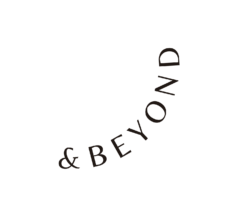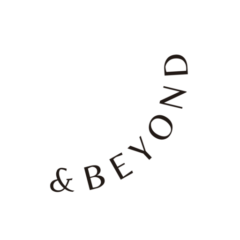Overcoming Limiting Beliefs and Embracing Your True Potential
We all have stories within us, shaped by past experiences, others’ expectations, and our inner dialogue. These stories often come in the form of limiting beliefs that hold back our potential and growth. For instance, a common limiting belief is ‘I’m not good enough,’ which can make us feel incapable or undeserving of happiness and success. Another example is ‘I’m not smart enough,’ which can affect our self-worth and block our path to healing and self-improvement.
This blog post will examine how to identify and release limiting beliefs. We can break free from their hold by understanding how they impact our thoughts and behaviors. This journey requires courage and commitment, but the potential rewards are immense. As we release beliefs that no longer serve us, we’ll find newfound freedom and a world of possibilities. Knowing it is within reach, let’s take steps towards greater self-healing and personal growth.

Understanding Limiting Beliefs
“Nothing binds you except your thoughts; nothing limits you except your fear; and nothing controls you except your beliefs.” — Marianne Williamson
Our beliefs can be shaped by the environments we grow up in, societal norms that dictate what is acceptable or expected, and the experiences we encounter along life’s journey. They act as filters through which we interpret the world, influencing our decisions, actions, and, ultimately, our sense of self-worth. Recognizing these beliefs involves peeling back the layers of our thought patterns to uncover the underlying assumptions that hold us back. By illuminating these beliefs, we can challenge their validity and explore alternative perspectives that empower rather than constrain us.
Understanding limiting beliefs isn’t just about gaining awareness; it’s about reclaiming the power to redefine our narratives and rewrite our stories about what we can achieve. It’s a journey of self-discovery and growth, where each realization opens up new possibilities for personal transformation and healing. Limiting beliefs don’t just appear out of nowhere; they are often ingrained in us over time. Many of these beliefs are rooted in the early messages we receive from those around us. For instance, comments from caregivers or teachers can deeply influence our perception of ourselves, planting the seeds of doubt that grow into limiting beliefs.
Additionally, the environment we grow up in plays a crucial role in shaping these beliefs. The expectations and norms we are exposed to can set specific standards we feel pressured to meet. When we fall short of these standards, even if they are unrealistic, we might start believing that we are not capable or worthy. Our own experiences also contribute to the formation of limiting beliefs. When we encounter failures or setbacks, especially in our earlier years, they can leave a lasting impression. These experiences can lead us to internalize negative beliefs about our abilities and potential. For example, failing a test might lead us to believe that we are not smart enough, or a rejection could make us think we are not likable or lovable.
Over time, these beliefs become a part of our internal dialogue, influencing how we see ourselves and what we believe we can achieve. They become the lens through which we view our potential and the world. Recognizing and understanding the origins of these limiting beliefs is the first step toward challenging and ultimately releasing them, empowering us to pave the way for a more fulfilling life. It’s about rewriting the script and believing in our limitless potential.
The Impact of Limiting Beliefs on Self-Worth
“One of the hardest expressions of self-assertiveness is challenging your limiting beliefs.” — Nathaniel Branden
Limiting beliefs significantly impact our self-worth, affecting our emotions, behaviors, and physical health. Let’s explore how these beliefs influence us and uncover ways to address them. They often lead to a range of negative emotions. Feeling inadequate or incapable can create emotional burdens like anxiety, causing us to worry constantly about our abilities and future. This can lead to low self-esteem and self-doubt, making us question every decision. In more severe cases, these beliefs can contribute to depression, creating a sense of overwhelming hopelessness.
Holding onto limiting beliefs also affects our actions. Self-sabotage, a common behavior where we unintentionally impede our efforts, is often a result of these beliefs. For example, suppose we don’t feel deserving of success. In that case, we might procrastinate on important tasks, ultimately setting ourselves up for failure. Recognizing and changing these behaviors is a proactive step towards overcoming these beliefs and realizing our true potential. The stress and tension caused by holding onto limiting beliefs can also impact our physical health. Chronic stress can lead to various health issues, such as headaches, muscle tension, and digestive problems. Over time, this strain can contribute to more serious chronic health conditions, including cardiovascular diseases and a weakened immune system.
By acknowledging the influence of limiting beliefs and recognizing these patterns, we can confront and alter them, opening the door to a more satisfying life. Embracing our true potential starts with understanding and letting go of the beliefs that hold us back.
Identifying Your Limiting Beliefs
Self-reflection is a powerful tool for identifying limiting beliefs and unraveling deeply ingrained thought patterns that may hold you back. Taking time to introspect and observe recurring themes in your thoughts, especially those that evoke feelings of self-doubt or limitation, can be highly beneficial. This process can help you become more in tune with your inner self, fostering a clearer understanding of your beliefs and their impact on your self-perception. Keeping a journal can be particularly effective here, as it allows you to tangibly capture these thoughts and patterns.
Mindfulness practices, including meditation, are crucial in cultivating awareness of the present moment. Through mindfulness, you can observe your thoughts without judgment, becoming attuned to the underlying beliefs that influence your reactions and decisions. Meditation, in particular, offers a focused opportunity to explore the deeper layers of your mind, often revealing subconscious beliefs that may otherwise remain hidden.
Seeking feedback from those you trust provides an external perspective that can illuminate blind spots in your self-awareness. Trusted individuals can offer insights into patterns of behavior or thought processes you might not recognize. Their observations and feedback can provide valuable clarity and help challenge or confirm your perceptions of yourself.
Recognizing triggers is another vital aspect of identifying limiting beliefs. Pay attention to situations or interactions that consistently evoke strong emotional responses or feelings of inadequacy. These triggers often point directly to underlying beliefs influencing your reactions and choices. By acknowledging these triggers, you can begin to unravel the beliefs associated with them and work towards releasing their hold on your self-perception.
Incorporating these techniques into your journey allows you to uncover and confront limiting beliefs with compassion and understanding. Embrace the process of self-discovery with openness and curiosity, knowing that each insight gained brings you closer to aligning your beliefs with your true potential.

As you progress, it’s important to remember that letting go of limiting beliefs is an ongoing journey. It requires patience, self-compassion, and a commitment to personal growth. Approach this journey with an open heart and a positive mindset. Celebrate each step forward, no matter how small, and have confidence that you are moving towards a more fulfilling and authentic life.
You can rewrite your story and shape a future in which limiting beliefs do not define you but empower you with your true potential. Keep believing in yourself, and let this newfound awareness lead you toward a brighter, more abundant future.
To continue your journey on releasing limiting beliefs, visit our Resources page to access guided affirmations and meditations.


